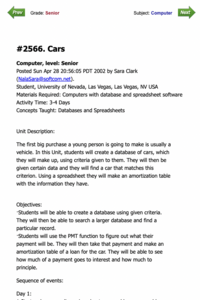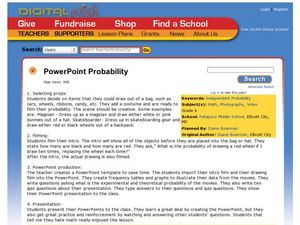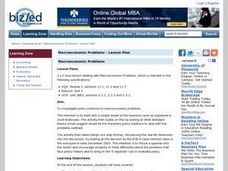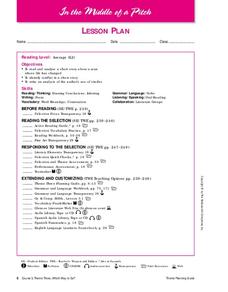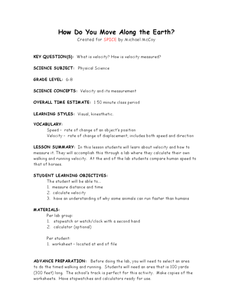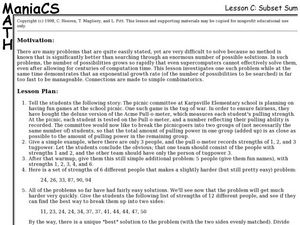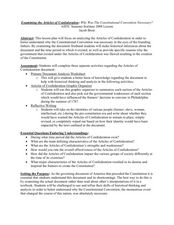Curated OER
Earthquake Patterns
Students identify and interpret the cyclical nature of the Parkfield, California earthquakes. They then investigate and graph earthquake occurrences on the Mojave segment of the San Andreas fault and then on the Hayward fault in order to...
Curated OER
Mosquito Bytes
Students investigate mosquitoes. In this mosquito bytes lesson, students consider reasons why mosquitoes transfer disease and ways to combat them. Students read an article, discuss, and complete a quiz.
Curated OER
Tobacco Smoking and Lung Cancer
Students explore tobacco smoking and the impact it has on society. In this health lesson students complete several experiments on smoking and lung cancer.
Curated OER
Displaying Populations: Jellybeans, Paper and People
Students investigate the factors affecting population growth. In this biology lesson, students collect data from the lab and graph them. They estimate population size using a mathematical formula.
Curated OER
STRAINING FOR SOUND
Sixth graders use a laser along with computer microphone probeware and the appropriate software, 6th graders determine the speed of rotating objects.An audio amplifier is connected to a solar cell to change the laser light signal into a...
Curated OER
Horror Tales: What Makes Them Spooky?
Before you jump into this lesson plan, be aware there is little to work with. That being said, the ideas are solid and will be brought to life with a little Halloween spirit. Learners examine horror as a sub-genre, and contemplate what...
Curated OER
Explain the Change
Twelfth graders complete research relating to population changes in counties/states in the U.S. from 1900 to 2000 and use the slope formula to determine the overall change in population for each of the ten decades. They present their...
Curated OER
Social Studies: How Much Postage?
Young scholars discover the reasons behind the increase cost of mail postage. Visiting provided Websites, they investigate the history of stamps and how rates became based on weight. To conclude, students brainstorm reasons for the...
Curated OER
Cars: Math, Research, Economics, Loans
Students investigate what the purchasing of a car entails. They explore car criteria and financing options.
Curated OER
PowerPoint Probability
Sixth graders investigate film making by creating a video about probability. In this math visualization lesson, 6th graders create a presentation for their class demonstrating the probability of random events taking place in the real...
Curated OER
Polishing the Petoskey
Students polish a Petoskey stone to show how to make an attractive rock display. In this polishing rocks lesson plan, students use sand paper and polishing materials to polish a rock and remove the rock dust. This is to display a nice...
Curated OER
Macroeconomic Problems
Students identify the main phases of the business cycle and the conditions that are expected during a recession and boom. They discuss the difficulty of economic policy making. They practice solving equations using interest rates.
Curated OER
Filling Empty Pockets: Borrowing, Loans, and Credit
Students examine credit components and how each works within our economy today. In this financial literacy activity, students explore credit terms and make decisions based on real credit card offers that they find in their on line...
Curated OER
Ratio
Students calculate the ratio and apply it to construction. In this geometry instructional activity, students convert between different units and use decimals and fractions interchangeable. They find the fraction of a given amount using...
Curated OER
US Government (Cooperative Team and Class-building Activities)
Students participate in team-building activities. In this class identity lesson, students participate in activities and discussion that are intended to improve relationships between students.
Curated OER
Which Way To Go?
Students prepare for and respond to literature selections. This package of lessons includes nine lessons from the American Literature series, each covering a different reading selection about a man making a key life decision. Pre-reading...
Curated OER
How Do You Move Along the Earth?
Students determine their own walking and running velocity. In this physics instructional activity, students calculate velocity using distance and time information. They compare human and animal speeds.
Curated OER
Subset Sum
Students explore the concept of exponential growth. In this exponential growth instructional activity, students solve a problem about ensuring fairness in a Tug-of-War. Students determine which students should be on a team to ensure...
Curated OER
African American Life in the Pee Dee Before the Civil War
Third graders examine the life of the African American in the Pee Dee region during slavery. In this slavery lesson, 3rd graders explore primary and secondary documents related to the topic and create a timeline of when slavery first...
Curated OER
Picture Perfect
Students work together in groups to research Afghanistan in the 1970s and today. After reading a story about a Peace Corps volunteer, they discuss things they must do in their community they believe are unneccessary. They end the...
Curated OER
Pollution Solutions
Young scholars visit a local park to test the quality of the aquatic environments. They search for sources of pollution and examples of pollution control. Based on their obeservations and experiments, they rate their local environment.
Curated OER
Early Colonial Labor Force: Indentured Servants and Slaves
Students study the labor force used during Colonial America. In this Colonial America lesson, students discuss labor types used in the colonies. Students read about indentured servants and the use of African slaves. Students use the...
Curated OER
Why was the Constitutional Convention Necessary?
Eleventh graders explore the steps leading up to the Constitution. For this American Government lesson, 11th graders practice document based questions. Students create a letter that describes how a person felt during this time period.
Curated OER
Physical Fitness and Obesety
Students use Internet web sites to discover how physically fit they truly are. Each group must use three web sites to answer questions and make an assessment of the person they have. Each group report back to the class what they have...










